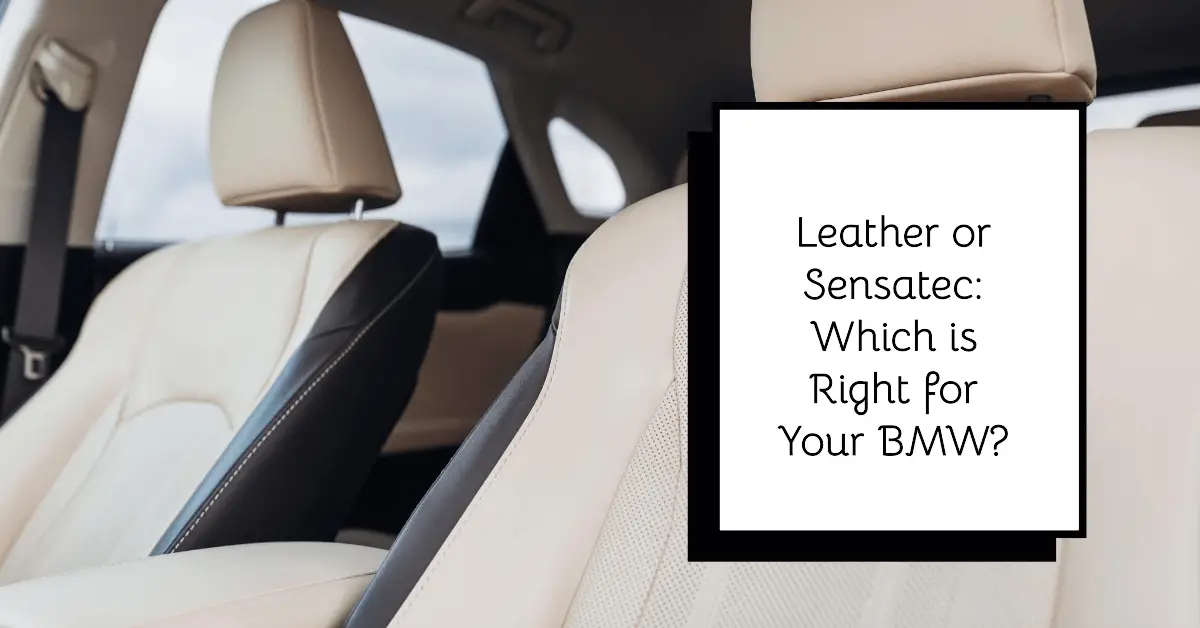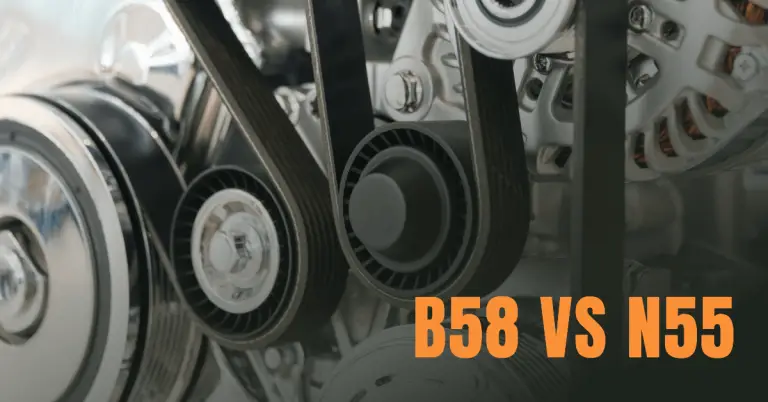BMW Sensatec vs Leather: Which Is Better for Interiors?
Luxury vehicles aim to surround drivers and passengers with premium comfort and quality. BMW uses both real leather and synthetic Sensatec for seating surfaces and interiors. But what’s the difference between these two materials?
So how does BMW’s Sensatec interior upholstery compare to real leather?
While leather provides a more luxurious feel and greater durability, Sensatec is cheaper and easier to maintain. There are pros and cons to each material.
In this detailed comparison, we’ll look at the differences between BMW Sensatec and leather in terms of:
- Comfort and feel
- Quality and durability
- Maintenance and cleaning
- Cost and availability
- Environmental impact
By the end, you’ll understand the advantages and disadvantages of each upholstery material to make the best choice for your needs.
Comfort and Feel: Leather Is More Supple but Sensatec Is Soft Too
One of the most important factors in choosing interior upholstery is comfort. How does it actually feel to sit on and touch the material on a daily basis?
Leather has a clear edge when it comes to providing a luxurious, supple feel:
- The natural hide conforms to your body for exceptional comfort. It has give and flexibility that synthetic materials struggle to match.
- Quality leather develops a beautiful patina over time, enhancing the luxury feel. The more you use it, the softer it becomes.
- Leather feels cooler in the heat and warmer in the cold compared to fabric upholsteries.
However, Sensatec has a soft, fabric-like feel that is still quite comfortable:
- Made from vinyl, it provides decent cushioning on seats though not as much contouring as leather.
- The synthetic material feels consistent. It does not develop a patina over time like leather.
- Sensatec handles temperature fluctuations well. It stays cooler than leather in the heat.
While Sensatec cannot match the luxurious comfort of quality leather, it still provides a relatively soft, pleasing feel for drivers and passengers. But leather remains the gold standard for supple feel and contouring.
Quality and Durability: Leather Is Tougher but Sensatec Wears Well Too
In addition to comfort, BMW owners expect meticulous quality and durability from interior materials. Quality leather and Sensatec both deliver:
- Leather comes from the hides of animals like cows, buffalo, pigs, sheep, and goats. It provides unmatched toughness and insulation.
- The animal hides are tanned and processed to create soft, durable, premium leather. It develops a patina over time.
- Sensatec consists of vinyl fabrics and synthetic materials. The quality is consistent since it’s artificially produced.
When it comes to durability:
- High-grade leather can last for decades, especially with proper care and conditioning. It ages beautifully over many years.
- Sensatec holds up well to regular use but tends to wear out faster than real leather over an extended period of time.
- While leather can crack from lack of conditioning, Sensatec is not prone to cracks and damage from drying out.
So while Sensatec offers decent quality and lifespan, leather wins out on long-term durability due to the inherent toughness of animal hides. But Sensatec withstands cracks and conditioning requirements better.
Maintenance and Cleaning: Sensatec Is Easier to Care For
Caring for and cleaning interior upholstery materials is an important part of vehicle ownership. Here’s how the two options compare:
- Leather requires regular conditioning with mink oil, waxes, or leather creams to prevent cracks and drying. Sensatec has no conditioning requirements.
- Spills and stains need quick cleaning on leather to avoid permanent damage. Sensatec wipes clean more easily.
- Over time, leather develops scratches and wear marks more readily than Sensatec.
- Sensatec resists UV damage and fading better than leather.
So while leather delivers unparalleled luxury feel, Sensatec is simpler to clean and care for. It wipes clean easily without risk of damage from improper conditioning. Leather requires more meticulous maintenance.
Cost and Availability: Leather Is Premium, Sensatec Is Standard
One of the biggest factors that influences the choice between leather and Sensatec is cost:
- Leather comes standard on BMW’s luxury models like the 7 Series and X5. Sensatec is standard on more affordable models.
- Choosing leather upholstery as an option costs an additional $1000 to $2000 depending on the model and packages. Sensatec has no upgrade cost.
- Because Sensatec is a synthetic material made from vinyl and plastic, it costs BMW less money to source and install on vehicles.
- Leather availability is dependent on the supply of animal hides. Sensatec is easier for BMW to source in large quantities.
So while leather commands a price premium due to its luxurious pedigree and supply constraints, the synthetic Sensatec offers practicality and cost savings to buyers.
Environmental Impact: Leather Production vs Petroleum-Based Sensatec
The final consideration is the environmental impact of leather versus Sensatec:
- Leather relies on the livestock industry which generates pollution from animal wastes, chemicals, and methane emissions.
- Sensatec consists of plastics and vinyls derived from petroleum. The production and disposal of these materials leads to pollution.
- However, Sensatec is theoretically recyclable. Leather is very difficult to recycle or biodegrade once vehicles reach the end of their lifespan.
Neither option is environmentally perfect. But Sensatec may have a slight edge from recyclability and emitting fewer greenhouse gases. Of course, raising livestock has other sustainability issues as well.
Conclusion: Personal Preference Matters Most
When choosing between BMW’s Sensatec or leather upholstery, there are compelling advantages and disadvantages to both options:
- For unmatched luxury feel and long-term durability, leather reigns supreme. It contours perfectly and wears beautifully over decades.
- But for convenience, affordability and ease of maintenance, Sensatec makes an excellent choice. It saves money upfront and with care.
- Leather tanning and production raises environmental concerns, but Sensatec relies on petroleum and plastics. Neither is perfectly eco-friendly.
Ultimately, your personal preferences and budget will determine whether leather or Sensatec is the better fit. There’s no unanimously superior option.
If you love the peerless comfort of real leather and don’t mind the higher cost and care requirements, then leather may be worth the investment.
But if you want quality and convenience at an affordable price, then well-made Sensatec upholstery can be highly satisfying.
By understanding the pros and cons of each material, you can make the BMW interior choice that fully aligns with your needs and expectations. Both leather and Sensatec deliver an excellent driving experience in different ways.







